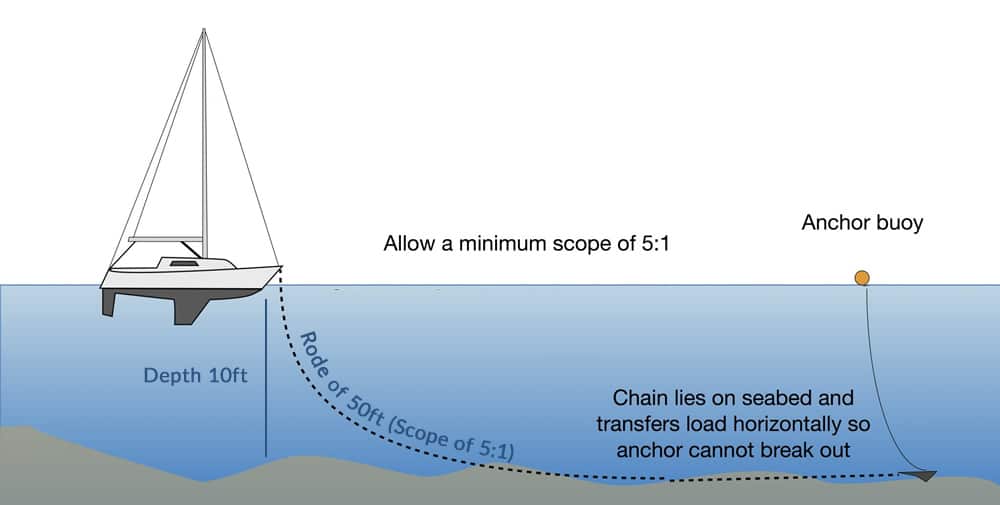Tips On Anchoring
- Verify that the water has sufficient depth for your hull to clear the bottom yet not be too deep for your anchor line. If you are in an area affected by tides, do not forget to consider a rising or falling tide;
- Make sure that your anchorage provides enough swing room for your boat to swing safely 360 degrees on the anchor line if the wind changes direction;
- Pick a spot upwind from where you wish to end up (once you set anchor, you will drift downwind);
- Provide enough scope. Scope is the ratio between length of the rode and the depth of the anchorage;
- The amount of scope required to anchor a boat safely depends on weather conditions. The recommended minimum length of anchor line used for an overnight stay in good weather conditions is five (5) to (10) times the depth of water. The more sheltered an anchorage, the less scope required;
- Use larger anchors during adverse sea conditions and ensure the shackle pin has a locking device;
- Ensure the anchor is lowered from the bow slowly, not thrown over. Play out enough anchor line to the required scope (i.e. a scope of 5:1 in sheltered area), then tie off the line on the bow cleat;
- Make sure that once the line is secured, you backup your vessel slowly until the anchor line goes taut. This indicates that the anchor is set into the bottom;
- Never set an anchor over the side or over the stern of a boat under 6m in length. If waves build up, the boat could be swamped and sink; and
- Attaching an anchor chain between an anchor and the anchor line weighs down the anchor and helps it set into the bottom.

Study Guide
Menu

